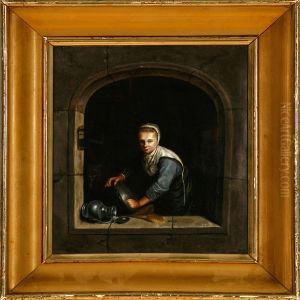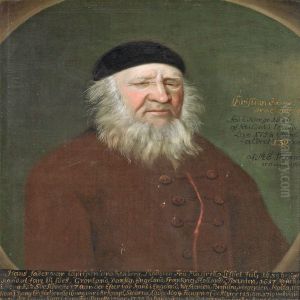Morten Thrane Brunnich Paintings
Morten Thrane Brünnich was a Danish zoologist and mineralogist, born on September 30, 1737, in Copenhagen, Denmark. Though primarily recognized for his contributions to the natural sciences rather than as a traditional artist, his work significantly impacted the scientific illustration and documentation of wildlife, an essential aspect of the intersection between art and science during the 18th and early 19th centuries. His educational journey led him to the University of Copenhagen, where he immersed himself in the study of natural history, a field that, during his time, was burgeoning with new discoveries and a growing interest in cataloging the natural world.
Brünnich's scientific endeavors are most notably encapsulated in his seminal work, 'Ichthyologia Massiliensis' (1768), which focuses on the fish found in the waters around Marseille, France, and 'Ornithologia borealis' (1764), a study of the birds of Scandinavia. These works, rich with detailed descriptions and illustrations, exemplify the era's blend of scientific rigor and artistic expression, as each species was meticulously documented not only through text but also through detailed drawings. Such illustrations were crucial for the scientific community's understanding and classification of biodiversity, serving as a bridge between unknown species and scholars worldwide.
Beyond his contributions to zoology and mineralogy, Brünnich's legacy includes his role as a professor at the University of Copenhagen, where he influenced many young scientists and fostered a deep appreciation for the natural world. His academic and scientific career was marked by a passion for exploration and discovery, which was instrumental in the development of natural history as a scientific discipline. Brünnich's work laid foundational knowledge for future generations of scientists and artists alike, emphasizing the importance of detailed observation and documentation of the natural world.
Morten Thrane Brünnich passed away on September 19, 1827, in Copenhagen. His death marked the end of a prolific career that spanned several decades, during which he significantly contributed to the fields of zoology and mineralogy. His legacy, however, lives on through his extensive writings and illustrations, which continue to be valuable resources for both scientists and historians of science. Brünnich's life and work exemplify the enduring connection between art and science, showcasing how detailed artistic representations can play a crucial role in scientific discovery and understanding.

